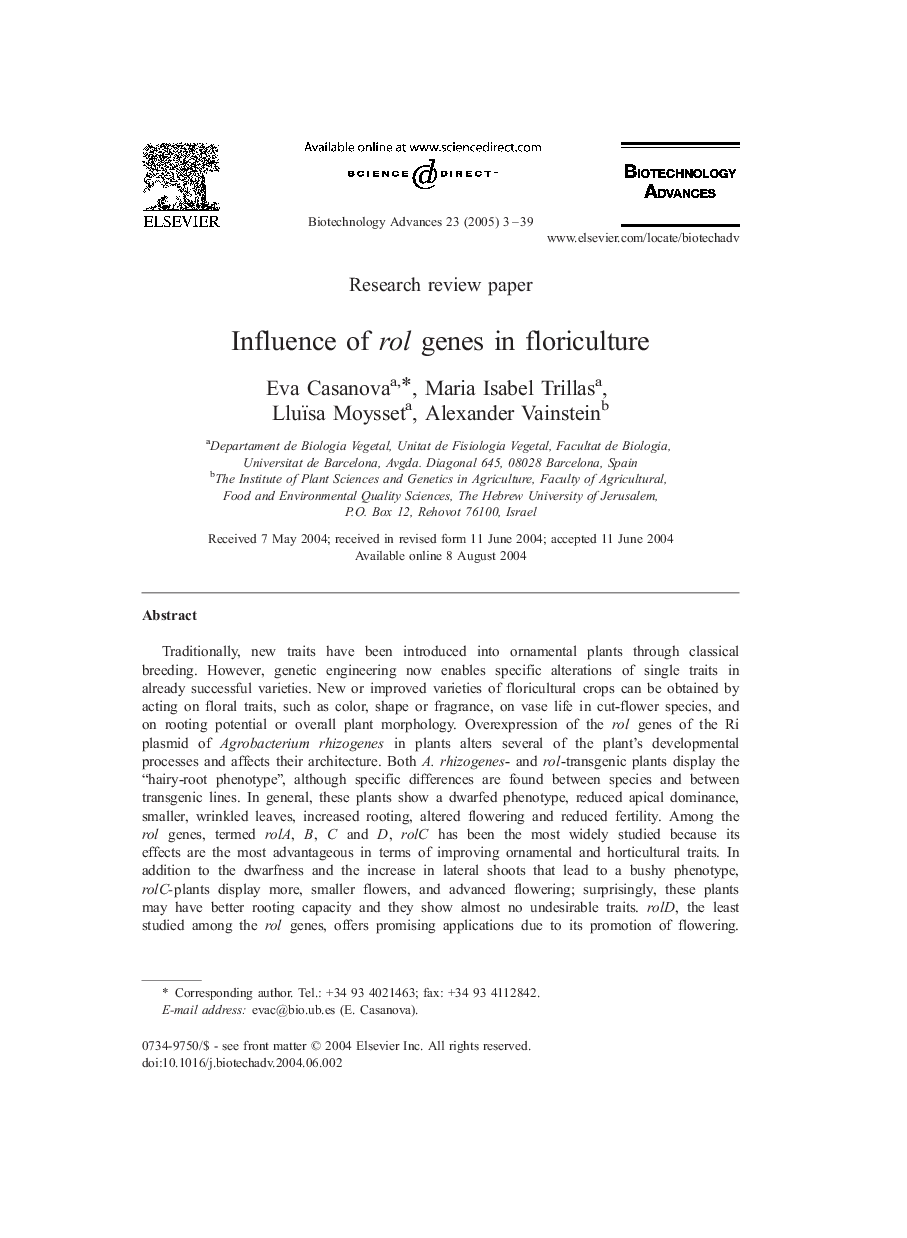| کد مقاله | کد نشریه | سال انتشار | مقاله انگلیسی | نسخه تمام متن |
|---|---|---|---|---|
| 10231737 | 1262 | 2005 | 37 صفحه PDF | دانلود رایگان |
عنوان انگلیسی مقاله ISI
Influence of rol genes in floriculture
دانلود مقاله + سفارش ترجمه
دانلود مقاله ISI انگلیسی
رایگان برای ایرانیان
کلمات کلیدی
موضوعات مرتبط
مهندسی و علوم پایه
مهندسی شیمی
بیو مهندسی (مهندسی زیستی)
پیش نمایش صفحه اول مقاله

چکیده انگلیسی
Traditionally, new traits have been introduced into ornamental plants through classical breeding. However, genetic engineering now enables specific alterations of single traits in already successful varieties. New or improved varieties of floricultural crops can be obtained by acting on floral traits, such as color, shape or fragrance, on vase life in cut-flower species, and on rooting potential or overall plant morphology. Overexpression of the rol genes of the Ri plasmid of Agrobacterium rhizogenes in plants alters several of the plant's developmental processes and affects their architecture. Both A. rhizogenes- and rol-transgenic plants display the “hairy-root phenotype”, although specific differences are found between species and between transgenic lines. In general, these plants show a dwarfed phenotype, reduced apical dominance, smaller, wrinkled leaves, increased rooting, altered flowering and reduced fertility. Among the rol genes, termed rolA, B, C and D, rolC has been the most widely studied because its effects are the most advantageous in terms of improving ornamental and horticultural traits. In addition to the dwarfness and the increase in lateral shoots that lead to a bushy phenotype, rolC-plants display more, smaller flowers, and advanced flowering; surprisingly, these plants may have better rooting capacity and they show almost no undesirable traits. rolD, the least studied among the rol genes, offers promising applications due to its promotion of flowering. Although the biochemical functions of rol genes remain poorly understood, they are useful tools for improving ornamental flowers, as their expression in transgenic plants yields many beneficial traits.
ناشر
Database: Elsevier - ScienceDirect (ساینس دایرکت)
Journal: Biotechnology Advances - Volume 23, Issue 1, January 2005, Pages 3-39
Journal: Biotechnology Advances - Volume 23, Issue 1, January 2005, Pages 3-39
نویسندگان
Eva Casanova, Maria Isabel Trillas, Lluïsa Moysset, Alexander Vainstein,